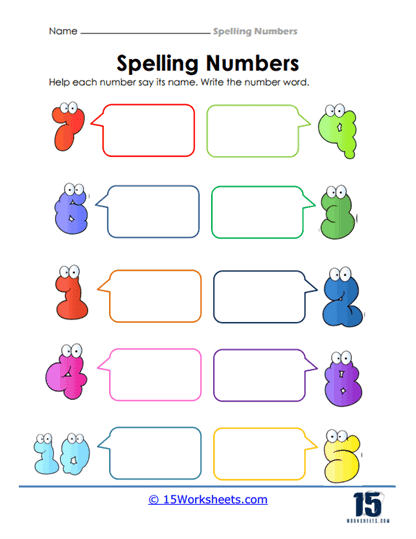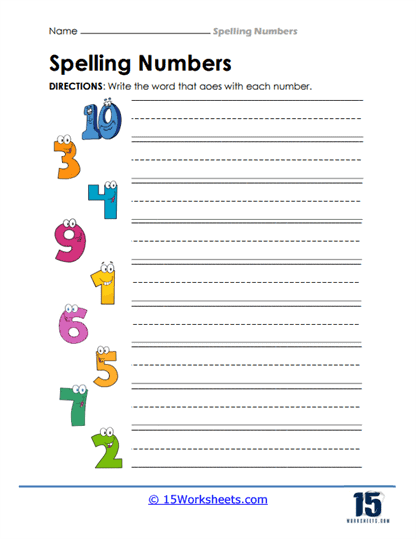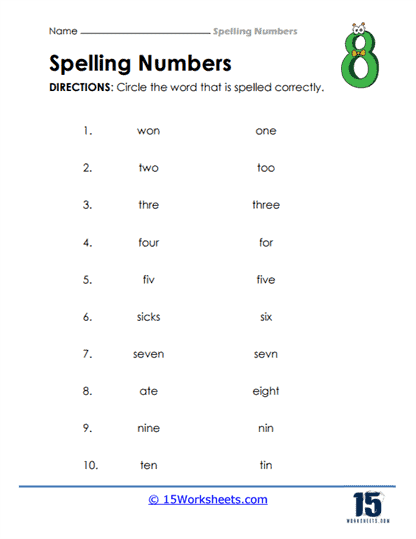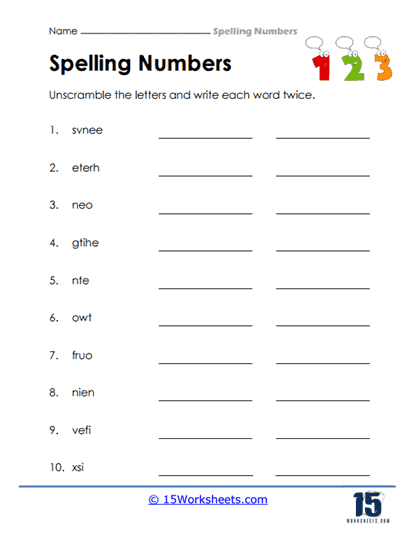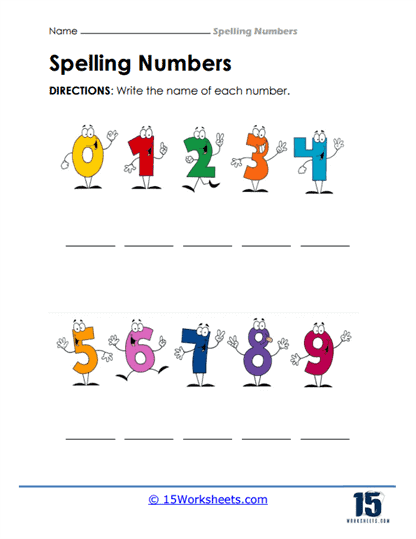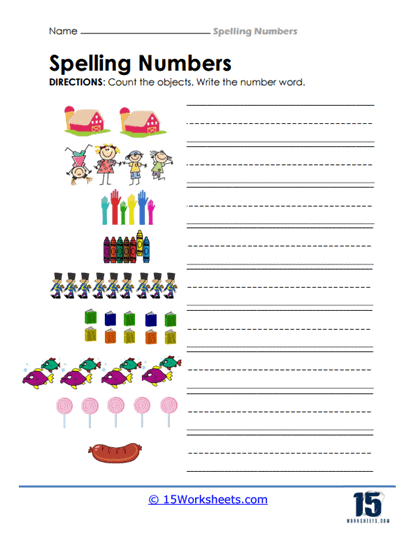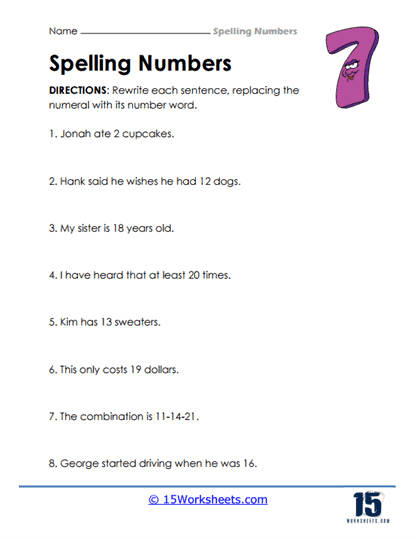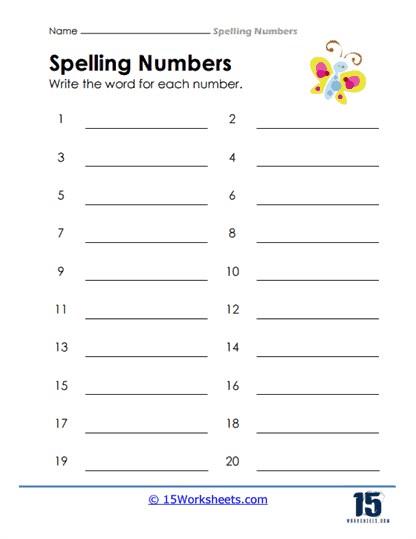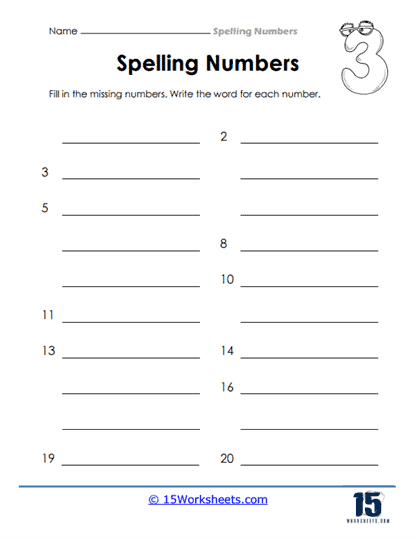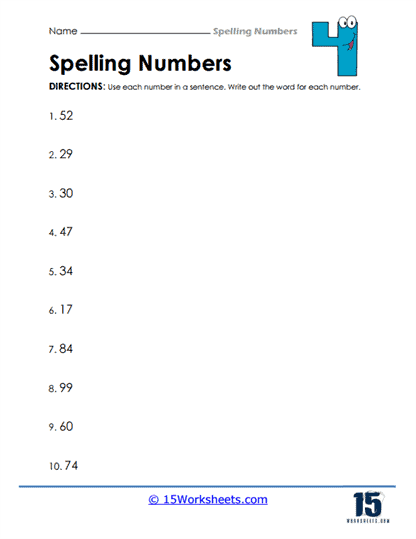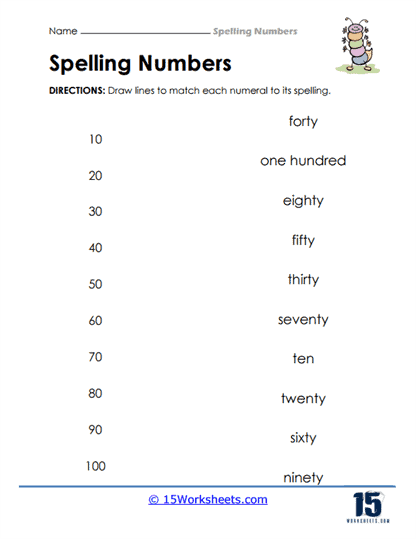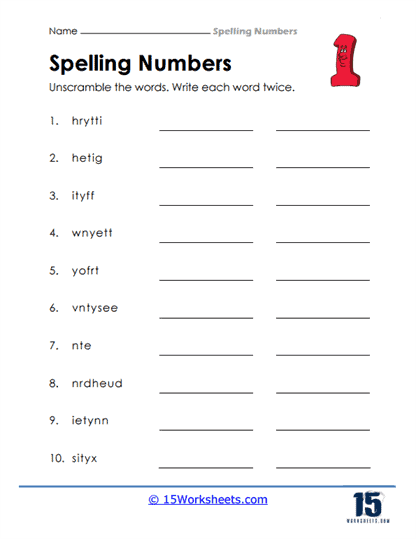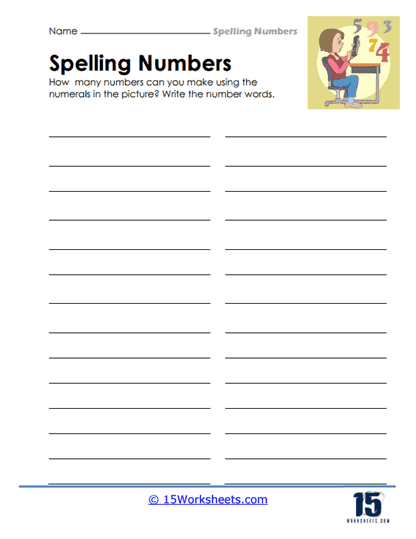Spelling Numbers Worksheets
All About These 15 Worksheets
Spelling numbers is a fundamental skill that bridges mathematical and linguistic learning, and these worksheets are designed to make this process engaging and effective. By combining interactive elements, problem-solving exercises, and visual aids, these activities provide a well-rounded approach to learning that caters to a variety of learning styles. This dual-focus on math and language helps students see the interconnectedness of these subjects, fostering a deeper understanding of both. Moreover, the engaging nature of these activities ensures that students remain motivated and enthusiastic about their learning journey. By appealing to visual, kinesthetic, and analytical learners, these worksheets create an inclusive environment where every student can thrive.
One standout feature of these worksheets is the matching exercises, where students connect numerals to their corresponding spelled-out words. For example, matching “1” with “one” or “15” with “fifteen” transforms learning into a visually stimulating activity. This process not only reinforces recognition but also strengthens the association between the numerical and textual representations of numbers. By repeatedly practicing these connections, students gain confidence in their ability to identify and spell numbers, which lays a solid foundation for future learning.
Another exciting aspect of these worksheets is the unscrambling activity, where students reorder jumbled letters to form the correct spelling of numbers. For instance, transforming “enet” into “ten” or “thritee” into “thirteen” becomes a fun challenge. This activity goes beyond simple memorization; it encourages students to use critical thinking and pattern recognition to solve the puzzles. These skills are not only essential for spelling but also for broader cognitive development, making the exercise both educational and entertaining.
Writing the names of numbers is another key component of these worksheets, supported by colorful and vibrant illustrations. The combination of writing and visual cues helps students better understand the connection between the numbers and their spellings. For example, a brightly illustrated numeral “8” paired with the task of writing “eight” creates a multisensory learning experience. This approach aids in memory retention and engages students more effectively than traditional rote learning methods. As students repeatedly write these numbers, they internalize the spelling and build muscle memory that reinforces their learning.
To take learning beyond isolated exercises, these worksheets incorporate contextual sentence activities. For example, a sentence like “Samantha has 3 apples” might prompt students to replace the “3” with “three.” This type of exercise highlights the practical application of spelling numbers in everyday language. It also enhances grammatical understanding by showing how spelled-out numbers function within sentences. By practicing in context, students not only improve their spelling but also deepen their comprehension of how numbers integrate into written communication.
Focusing on the numbers from 1 to 20, these worksheets emphasize foundational spelling mastery. Students are tasked with repeatedly writing and spelling these numbers to ensure accuracy and consistency. The structured nature of these exercises helps students maintain focus and reinforces the importance of precision. Mastery of these basic numbers is essential for building confidence and setting the stage for tackling larger numbers with ease. Additionally, by concentrating on a manageable range of numbers, students can deeply internalize the patterns and rules of number spelling without feeling overwhelmed. Each exercise is designed to be progressively challenging, ensuring that students feel a sense of accomplishment as they complete each task. This foundational practice not only improves spelling but also strengthens overall literacy and numeracy skills, which are critical for more complex learning.
As students advance, the worksheets gradually introduce higher numbers, such as multiples of ten and even up to one hundred. Matching numerals like “30” with “thirty” or “100” with “one hundred” allows students to expand their vocabulary systematically. This progression ensures that learning remains accessible and confidence-boosting. The gradual increase in difficulty prevents students from feeling overwhelmed, allowing them to solidify their skills step by step. By tackling higher numbers, students begin to grasp the structural patterns of numerical language, such as the consistent use of suffixes like “-ty” in multiples of ten. These exercises also expose students to compound number spellings, such as “seventy-five,” which require more advanced understanding and attention to detail. Through repeated exposure and practice, students become adept at spelling these larger numbers, building their readiness for real-world applications.
By incorporating a range of activities-matching, unscrambling, writing, and contextual usage-these worksheets provide a comprehensive toolkit for spelling numbers. The engaging and interactive format keeps students motivated while nurturing essential skills like problem-solving, pattern recognition, and contextual understanding. As students progress, they not only learn to spell numbers accurately but also gain a deeper appreciation for the interplay between language and mathematics. Each activity is designed to appeal to different learning preferences, whether students excel in visual, tactile, or linguistic tasks. For example, unscrambling exercises challenge analytical thinkers, while contextual sentence activities cater to students who learn best through real-world applications. By offering this variety, the worksheets ensure that students stay engaged and actively involved in their learning journey. These activities foster not just spelling proficiency but also critical thinking and a holistic understanding of numerical concepts.


